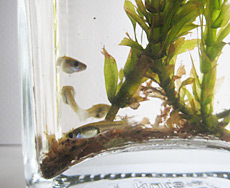Animations about the carbon cycle can help you understand how carbon moves in the earth ecosystem. Animations are especially useful because they can show motion of substances and energy.
One problem is that each carbon cycle animation can only highlight certain things about the carbon cycle. Diagrams and animations are simplifications—that's why they are powerful learning aids. But by simplifying, important details can be lost. Think of animations as puzzles you need to figure out. There are lots of parts and you have to fit them together.
 |
| Portion of an animation by Heather Kroening, published by BioDiTRL. |
- As you look at carbon cycle animations or diagrams try to figure out what they are trying to show and what they are leaving out.
- Focus on just one part of the cycle. For example, in this animation you might want to start by looking at the squirrel. I can see that CO2 goes from the squirrel (and tree) to bugs and mushrooms and then the CO2 seems to go to oil. As I look further I can see CO2 goes from the squirrel to the atmosphere. Once you understand one element, everything else falls into place.
- Ask yourself questions. What do blue and red CO2 bubbles mean in the carbon cycle animation above? Does CO2 really change directly into oil? That doesn't seem right. Conduct some internet research to try to answer your questions.
- Talk with someone (a study group, a teacher, etc.) about your questions. This is perhaps one of the best ways to really develop a deep understanding.
- Sometimes it's best to start by looking at a few diagrams before advancing to animations.
Remember, animations and diagrams are simplifications. But if you approach them with a critical and questioning eye, they can lead to speedy and deep learning.






